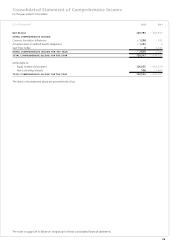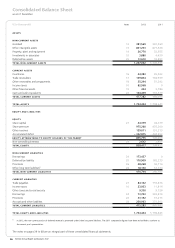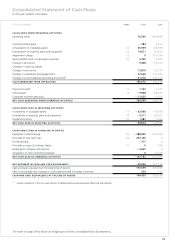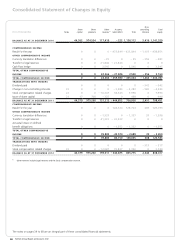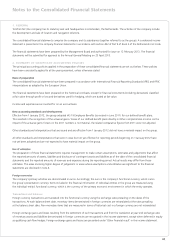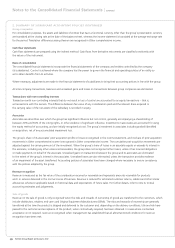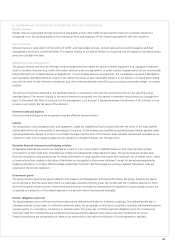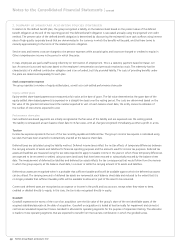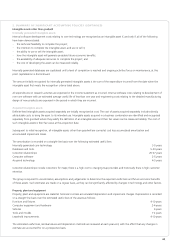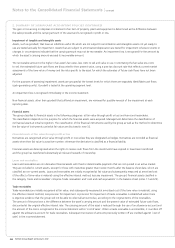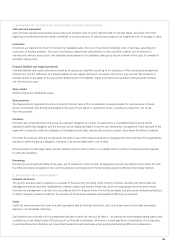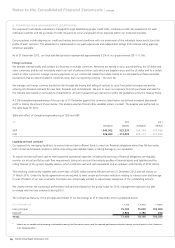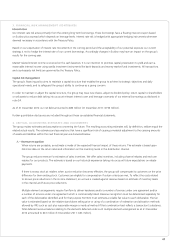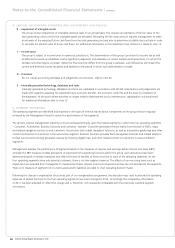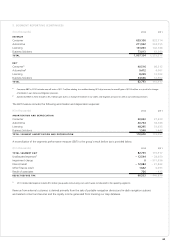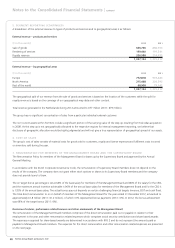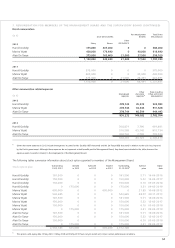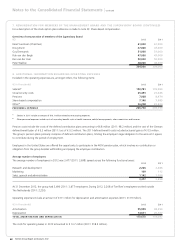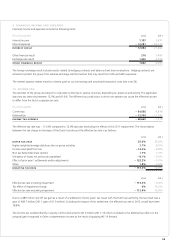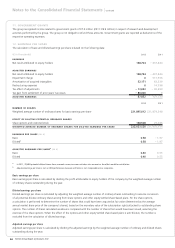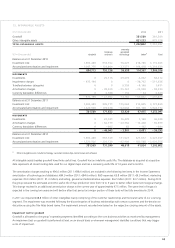TomTom 2012 Annual Report Download - page 47
Download and view the complete annual report
Please find page 47 of the 2012 TomTom annual report below. You can navigate through the pages in the report by either clicking on the pages listed below, or by using the keyword search tool below to find specific information within the annual report.
45
2. SUMMARY OF SIGNIFICANT ACCOUNTING POLICIES (CONTINUED)
Cash and cash equivalents
Cash and cash equivalents are stated at face value and comprise cash on hand, deposits held on call with banks, and other short-term
highly liquid investments that are readily convertible to a known amount of cash and are subject to an insignifi cant risk of changes in value.
Inventories
Inventories are stated at the lower of cost and net realisable value. The cost of inventories comprises costs of purchase, assembly and
conversion to fi nished products. The cost of inventories is determined using the fi rst-in, fi rst-out (FIFO) method, net of reserves for
obsolescence and any excess stock. Net realisable value represents the estimated selling price less an estimate of the costs of completion
and direct selling costs.
Financial liabilities and equity instruments
Financial liabilities and equity instruments issued by the group are classifi ed according to the substance of the contractual arrangements
entered into, and the defi nitions of a fi nancial liability and an equity instrument. An equity instrument is any contract that evidences a
residual interest in the assets of the group after deducting all of its liabilities. Equity instruments are recorded at the proceeds received,
net of direct issue costs.
Share capital
Ordinary shares are classifi ed as equity.
Share premium
The share premium represents the amount by which the fair value of the consideration received exceeds the nominal value of shares
issued. Incremental costs directly attributable to the issue of new shares or options are shown in equity as a deduction, net of tax,
from the proceeds.
Provisions
Provisions are recognised when: the group has a present obligation as a result of a past event; it is probable that the group will be
required to settle that obligation and the amount can be reliably estimated. Provisions are measured at management’s best estimate of the
expenditure required to settle the obligation at the balance sheet date, and are discounted to present value where the effect is material.
Provisions for warranty costs are recognised at the date of sale of the relevant products, at management’s best estimate of the expenditure
required to settle the group’s obligation. Warranty costs are recorded within cost of sales.
Other provisions include legal claims, pension liabilities and tax risks for which it is probable that an outfl ow of resources will be required
to settle the obligation.
Borrowings
Borrowings are recognised initially at fair value, net of transaction costs incurred. Subsequently, amounts are stated at amortised cost with
the difference being recognised in the income statement over the period of the borrowings using the effective interest rate method.
3. FINANCIAL RISK MANAGEMENT
Financial risk factors
The group’s activities result in exposure to a variety of fi nancial risks: including credit, foreign currencies, liquidity and interest rate risk.
Management policies have been established to identify, analyse and monitor these risks, and to set appropriate risk limits and controls.
Financial risk management is carried out in accordance with the Treasury Policy. The written principles and policies are reviewed periodically
to refl ect changes in market conditions, the activities of the business and laws and regulations affecting our business.
Credit
Credit risk arises primarily from cash and cash equivalents held at fi nancial institutions, and, to a certain extent, from trade receivables
relating to our wholesale customers.
Cash balances are only held with counterparties that have a credit risk rating of at least A – as rated by an acknowledged rating agency and
a satisfactory credit default swap (CDS) pricing of our fi nancial counterparts. Moreover, to avoid signifi cant concentration of our exposure
to particular fi nancial institutions, we ensure that transactions and businesses are properly spread among different counterparties.


